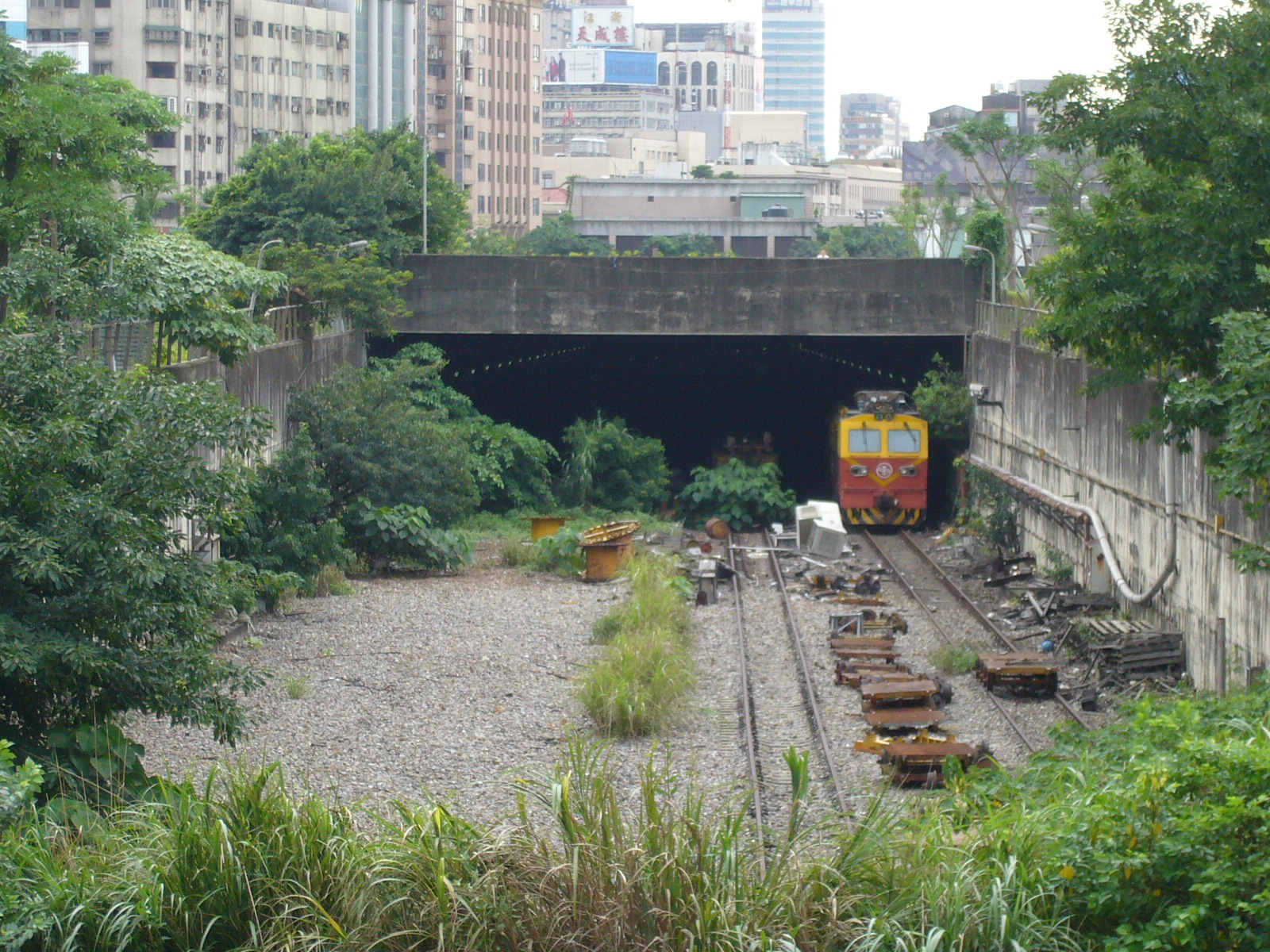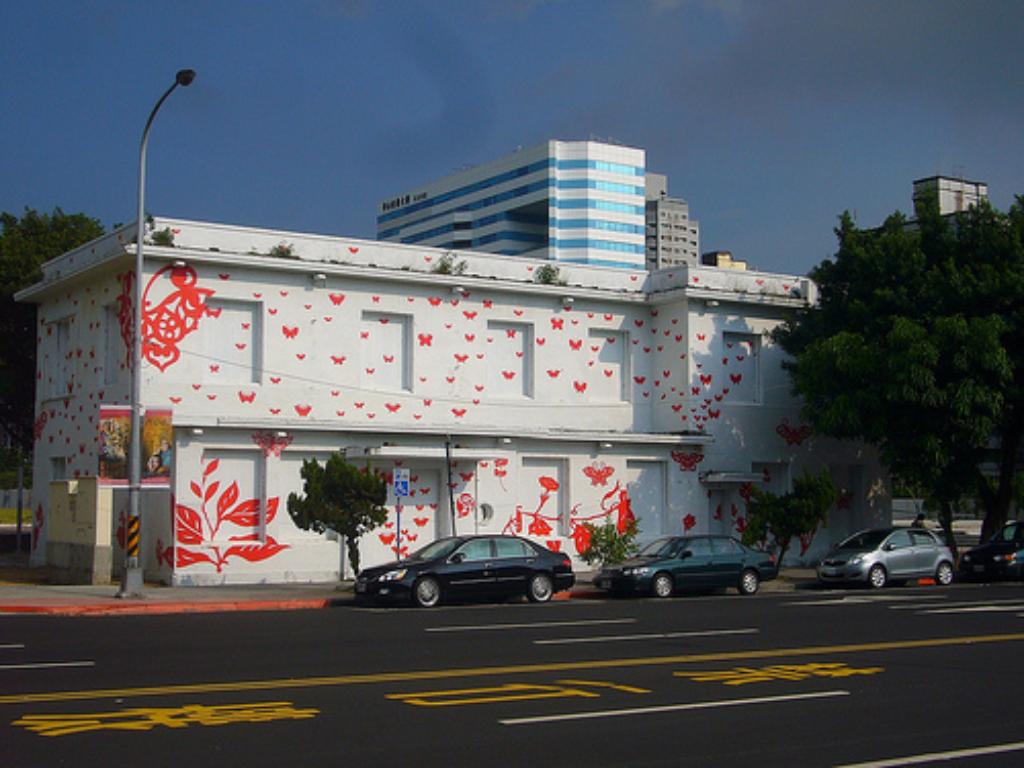Huashan Grassland: the previous life of today’s pilgrimage site for creative youth
Huashan Cargo Terminal, also known as Huashan Station, was situated on today’s Huashan Grassland behind Huashan 1914 Creative Park, covering an area between Civil Boulevard and Linsen North Road.
This area was part of “Sanbanqiao Village” during the period of Qing rule. Part of it was used by the Trade Agency as a training arena for soldiers, the rest of it was a grassland. During the period of Japanese rule, this area became an administrative district called “Kabayama-chō,” in memory of Taiwan’s first governor-general, Kabayama Sukenori. In 1916, the Japanese brewery company Nippon Hōjō Corporation set up a distillery nearby, which was, due to the imposition of the Japanese tobacco and liquor monopoly system, nationalized by the Governor-General’s Office in 1922 and renamed “Taihoku Liquor Distillery of the Monopoly Bureau of the Taiwan Governor-General’s Office.” The title was changed again after World War II to “Taipei Liquor Distillery of the Taiwan Provincial Monopoly Bureau,” which is presently Huashan 1914 Creative Park.
In 1937, because Taihoku Station (today’s Taipei Main Station) was to be converted into a bus terminal, the cargo business that used to be at Taihoku Station was transferred to Kabayama Station (Huashan Station), which was set up where the Huashan Grassland is today. What remains today of the railway and station buildings was built at this time. A lot of enterprises bought pieces of land in this area to build their own warehouses due to the prosperous cargo business.

▲ A news clipping published in 1937 reporting the opening of the Kabayama Station. (Source: Taiwan Daily News)
After World War II, Kabayama Station was renamed Huashan Cargo Terminal, becoming the largest freight train station and marshalling yard in Taipei at that time. Due to the rapid expansion of business, the Yanping District Cargo Office and the Sanchong City Cargo Office were set up in 1964 and 1967 respectively, proving how busy the freight traffic was back then.
Huashan Station: a freight station and transfer terminal for political victims
Since its establishment, Huashan Station had been used as a cargo terminal. During the White Terror period, however, a special group of passengers existed: political victims bound for Green Island to serve their sentence. According to extant historical documents, the very first group of political prisoners embarked on their journey on foot in the early hours of May 15, 1950, from the Detention Center of the Military Law Office under the Taiwan Provincial Security Command (at today’s No. 3, Qingdao East Road, where the Sheraton Grand Taipei Hotel is) to the Huashan Cargo Terminal. These political prisoners were paired up by putting handcuffs on one of their hands, with the other hand left free to hold their personal luggage. From here they would get on a freight train to Keelung Harbor (or were afterwards transferred again to Kaohsiung Harbor) where they would board a navy vessel bound for Green Island to serve their sentence. Thus, said station turned out to be a substantial transit hub for transferring political victims.

▲ A photo of Huashan Station in 1969 taken by the US Military. (Source: George Lane @flickr)
The forgotten train station, a historical relic in need of protection
In 1986, Taipei was undergoing a transformation as its train lines were moved underground, thereby eliminating Huashan Station. The underground construction ended at the East Exit of Huashan Station (which was later extended to Songshan Station). Soon after the elimination, parts of the previous train lines and the cargo terminal were preserved for the loading and unloading of construction materials, and the station was simultaneously renamed the “Huashan Railway Yard.” Upon the completion of the subway construction, the Huashan Railway Yard officially became a thing of the past.

▲ Remnants of the East Exit of Huashan Station. (Source: Wikipedia)
With the rapid development of Taipei City and its rail lines moved underground, all prewar train stations established in Taipei except for the Huashan Cargo Terminal no longer existed. Perhaps due to the pressure of city renewal, the rain canopy of Huashan Station’s platforms and the cargo warehouse next to it were torn down in 2007. In 2009, when the Taipei City Government planned to demolish the remaining parts of the station to carry out the “Beautiful Taipei” project, it immediately led to civil protests against the demolition. Fortunately, Huashan Station narrowly escaped demolition and remains where it is on Linsen North Road today.
Although the Huashan Cargo Terminal has been included in Taipei City’s “Urban Regeneration Station” (URS) project as part of the area of the “Huashan Grassland,” having a new lease on life in the form of greenery space, the terminal itself is yet to be registered as a historical site under legal protection.









